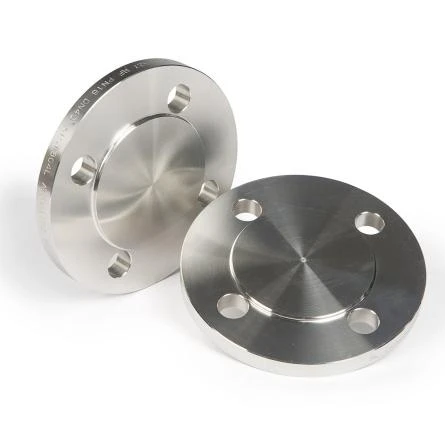-
Cangzhou Yulong Steel Co., Ltd.
-
Phone:
+86 13303177267 -
Email:
admin@ylsteelfittings.com
- English
- Arabic
- Italian
- Spanish
- Portuguese
- German
- kazakh
- Persian
- Greek
- French
- Russian
- Polish
- Thai
- Indonesian
- Vietnamese
- Zulu
- Korean
- Uzbek
- Hindi
- Serbian
- Malay
- Ukrainian
- Gujarati
- Haitian Creole
- hausa
- hawaiian
- Hebrew
- Miao
- Hungarian
- Icelandic
- igbo
- irish
- Japanese
- Javanese
- Kannada
- Khmer
- Rwandese
- Afrikaans
- Albanian
- Amharic
- Armenian
- Azerbaijani
- Basque
- Belarusian
- Bengali
- Bosnian
- Bulgarian
- Catalan
- Cebuano
- China
- China (Taiwan)
- Corsican
- Croatian
- Czech
- Danish
- Esperanto
- Estonian
- Finnish
- Frisian
- Galician
- Georgian
- Kurdish
- Kyrgyz
- Lao
- Latin
- Latvian
- Lithuanian
- Luxembourgish
- Macedonian
- Malgashi
- Malayalam
- Maltese
- Maori
- Marathi
- Mongolian
- Myanmar
- Nepali
- Norwegian
- Norwegian
- Occitan
- Pashto
- Dutch
- Punjabi
- Romanian
- Samoan
- Scottish Gaelic
- Sesotho
- Shona
- Sindhi
- Sinhala
- Slovak
- Slovenian
- Somali
- Sundanese
- Swahili
- Swedish
- Tagalog
- Tajik
- Tamil
- Tatar
- Telugu
- Turkish
- Turkmen
- Urdu
- Uighur
- Welsh
- Bantu
- Yiddish
- Yoruba

Jan . 09, 2025 13:45 Back to list
JIS B2311 BUTT-WELDING Cap
In the dynamic world of construction and plumbing, understanding the different types of pipes is crucial for selecting the right materials for any project. Whether it’s for residential, commercial, or industrial purposes, each pipe type offers distinct features, benefits, and drawbacks that need to be considered. This article explores the most commonly used pipe types, shedding light on their applications, and addressing why their proper selection is quintessential for any infrastructure development.
Galvanized steel pipes, although largely replaced by more modern solutions, are still found in older homes and structures. These pipes are strong and good for outdoor applications; however, they are prone to rust over time, which can lead to reduced water pressure and water quality issues. They are also heavy and difficult to install, thus used less frequently in contemporary plumbing projects. Choosing the right type of pipe is crucial for ensuring the sustainability and efficiency of any plumbing system. It depends largely on the specific requirements of the project, budget constraints, and local building codes. An in-depth understanding and knowledge of the advantages and limitations of each type will lead to better decision-making tailored to the project’s needs. One must also consider advancements in material science that continually introduce new piping options, with enhanced features that are designed to meet specific environmental challenges or offer improved safety and reliability. As a professional in the field, staying informed about these innovations not only ensures adherence to best practices but also enhances the ability to advise clients effectively or execute projects with precision. In conclusion, the proper selection of pipe types is a cornerstone of successful plumbing design and infrastructure development. Each pipe offers a unique set of capabilities, from longevity and resistance to corrosion, to ease-of-installation and flexibility. The use of expert knowledge to guide choice and application, supported by years of practical experience, establishes a foundation of trust and authority in product selection, eventually leading to successful and sustainable projects. It’s imperative not just to understand these materials but also to apply this understanding in ways that are beneficial both to the end-user and the environment.


Galvanized steel pipes, although largely replaced by more modern solutions, are still found in older homes and structures. These pipes are strong and good for outdoor applications; however, they are prone to rust over time, which can lead to reduced water pressure and water quality issues. They are also heavy and difficult to install, thus used less frequently in contemporary plumbing projects. Choosing the right type of pipe is crucial for ensuring the sustainability and efficiency of any plumbing system. It depends largely on the specific requirements of the project, budget constraints, and local building codes. An in-depth understanding and knowledge of the advantages and limitations of each type will lead to better decision-making tailored to the project’s needs. One must also consider advancements in material science that continually introduce new piping options, with enhanced features that are designed to meet specific environmental challenges or offer improved safety and reliability. As a professional in the field, staying informed about these innovations not only ensures adherence to best practices but also enhances the ability to advise clients effectively or execute projects with precision. In conclusion, the proper selection of pipe types is a cornerstone of successful plumbing design and infrastructure development. Each pipe offers a unique set of capabilities, from longevity and resistance to corrosion, to ease-of-installation and flexibility. The use of expert knowledge to guide choice and application, supported by years of practical experience, establishes a foundation of trust and authority in product selection, eventually leading to successful and sustainable projects. It’s imperative not just to understand these materials but also to apply this understanding in ways that are beneficial both to the end-user and the environment.
Next:
Latest news
-
ANSI 150P SS304 SO FLANGE
NewsFeb.14,2025
-
ASTM A333GR6 STEEL PIPE
NewsJan.20,2025
-
ANSI B16.5 WELDING NECK FLANGE
NewsJan.15,2026
-
ANSI B16.5 SLIP-ON FLANGE
NewsApr.19,2024
-
SABS 1123 FLANGE
NewsJan.15,2025
-
DIN86044 PLATE FLANGE
NewsApr.19,2024
-
DIN2527 BLIND FLANGE
NewsApr.12,2024
-
JIS B2311 Butt-Welding Fittings LR/SR 45°/90° /180°Seamless/Weld
NewsApr.23,2024











